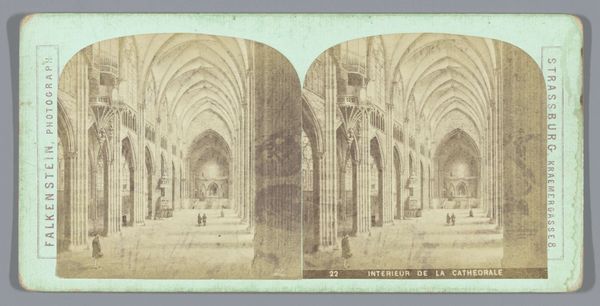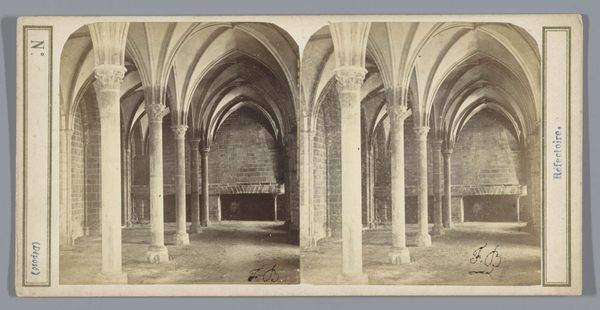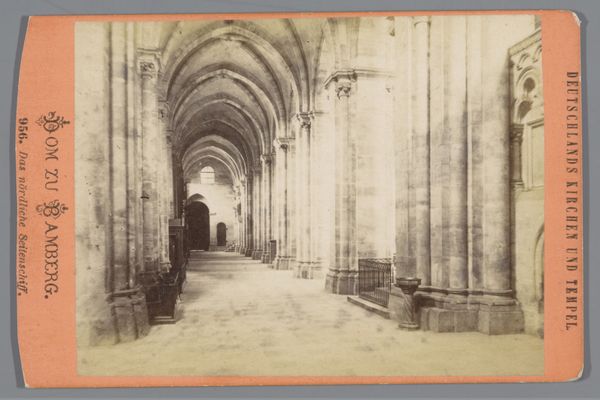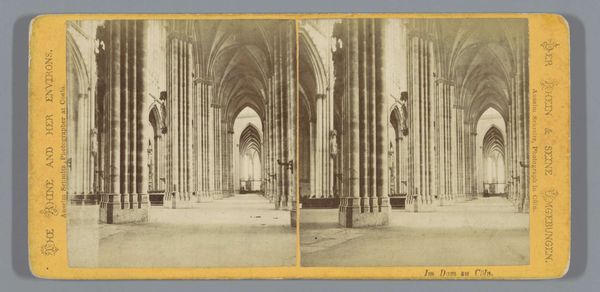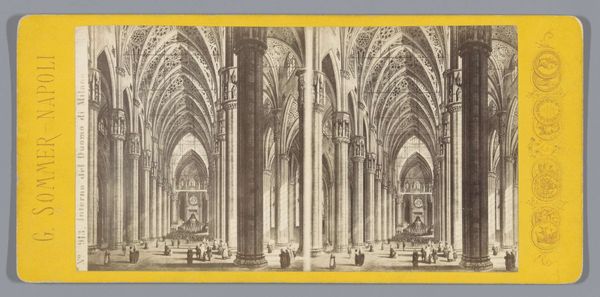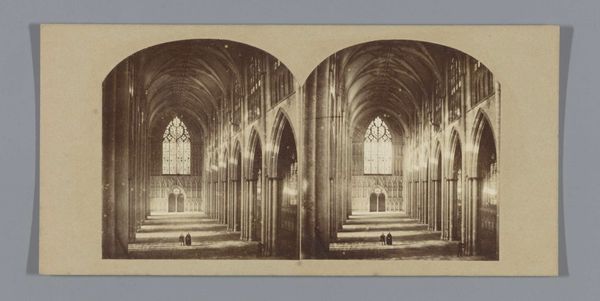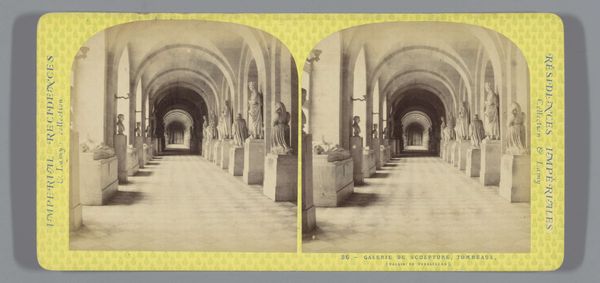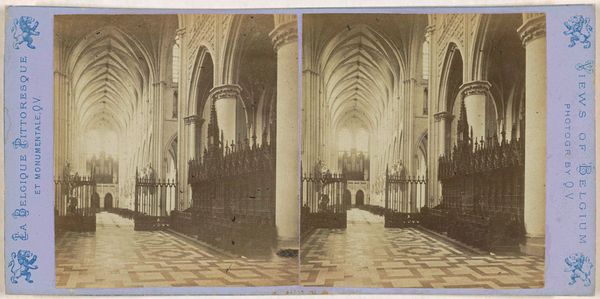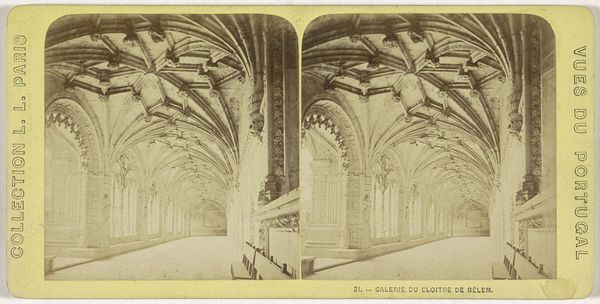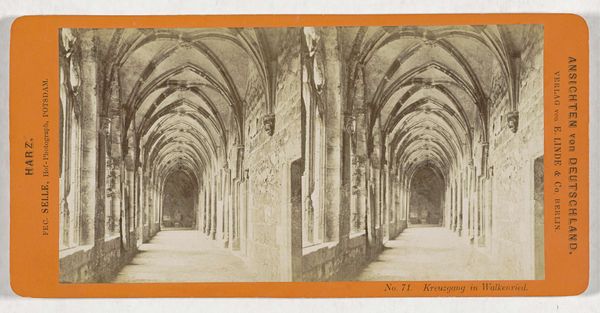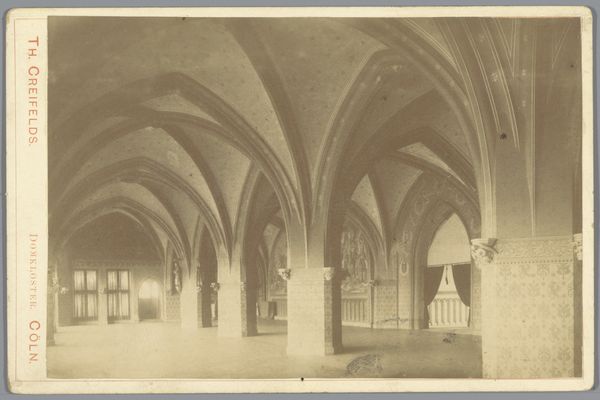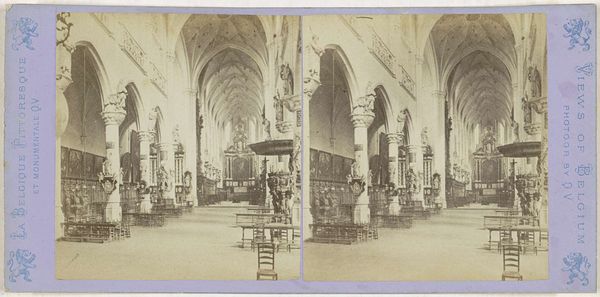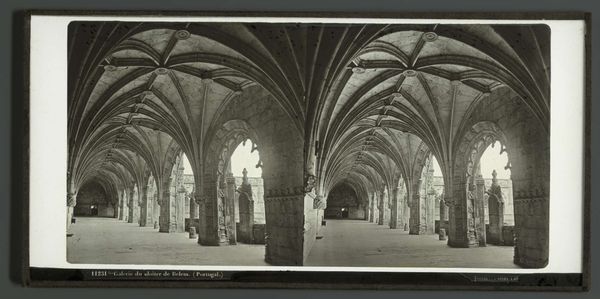
Gezicht op het interieur van het schip van de Notre-Dame in Straatsburg c. 1860 - 1880
0:00
0:00
Dimensions: height 88 mm, width 178 mm
Copyright: Rijks Museum: Open Domain
Curator: The grandeur is immediate. Editor: Indeed. We’re looking at a gelatin-silver print dating from about 1860 to 1880. The photographer, F. Peter, captured a stereoscopic view entitled "Gezicht op het interieur van het schip van de Notre-Dame in Straatsburg"—or "View of the Interior of the Nave of Notre-Dame in Strasbourg." Curator: It certainly evokes a sense of reverence. The towering columns, the pointed arches… they all converge, directing the eye toward what I assume is the altar at the far end. I notice the people are almost invisible, tiny specks against that huge space, the photographer seems to emphasize the building’s importance in comparison. Editor: Yes, that architectural aspiration speaks volumes about 19th-century notions of faith and progress. These gothic structures, by their nature, symbolically convey something about social aspiration and hope, while still representing cultural ideas about what's worth cherishing for coming generations. It appears here the photographer wanted the architectural marvel to speak for itself and let individuals reflect upon what they deemed sacred on their own terms.. Curator: And consider that Strasbourg had been annexed by Germany just prior to this image, then retroceded to France after WWI. The Cathedral had its own politicized identity that made the building’s continued use by congregants so poignant for regional memory. It is no doubt why Peter included this structure as a cultural monument for people to be proud of in difficult and evolving circumstances. Editor: You're right, those shifting borders imbue the image with added layers. This perspective… it nearly swallows those figures whole. And the sepia tone gives the scene a timeless quality, connecting the viewer across decades. It almost transcends the immediate purpose of just documentation. Curator: Precisely! What appeared here is also a sort of political endorsement where those standing beneath this colossal ceiling feel an affinity for this civic space. This church had long been not just a building, but a testament of collective identity and community in a time of tumult. Editor: Thank you for reminding me how important such edifices like these represent the values within society! I walk away thinking this picture is timeless in multiple ways. Curator: I couldn't agree more; thank you!
Comments
No comments
Be the first to comment and join the conversation on the ultimate creative platform.
